HISTORY
OF THE STATE SCIENTIFIC AND TECHNICAL LIBRARY OF UKRAINE
The foundation of the State Scientific and Technical Library of Ukraine in the mid-1930s and all subsequent years of its functioning are closely connected with the creation and development of the scientific and technical potential of the state.
The library was founded during the period of industrialization of the national economy, when there was a need for special scientific and industrial literature, the demand for which gave impetus to the development of creative and inventive activity. Thus, in March 1935, the interdisciplinary leading library of the Ukrainian SSR, the Kyiv branch of the State Scientific Library (SSL), was organized in Kyiv.
The Kyiv branch of the State Scientific Library had a collection of scientific and technical literature on all industries, which included more than 5,000 documents. Access to the collection was organized by subscription, in the reading room, and by ILL.
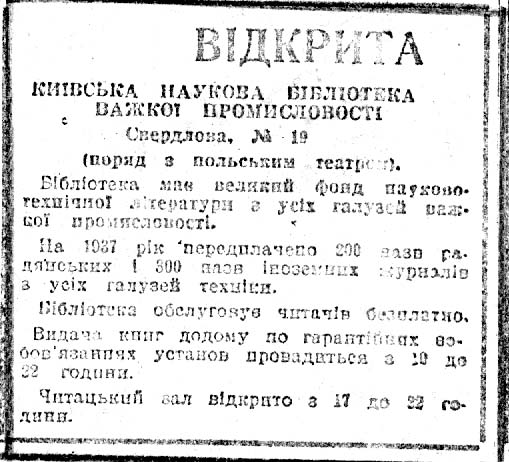
The announcement of the opening of the Kyiv branch from the press on April 22, 1937.
Photo: from the archive of the SSTL of Ukraine
In 1937, subscriptions to 200 titles of Soviet and 300 titles of foreign journals in all fields of technology began. In 1940, readers received about 300 thousand copies of scientific and technical literature. In 1941, the collection already had 160 thousand copies of documents and over 20 thousand users.
In the following years, the development of the STL network in Ukraine was hampered by the Second World War, which destroyed the pre-war collections of the Kyiv branch of the State Scientific Library and destroyed the library building.
After the war ended, the Kyiv branch of the SSTL was reopened at the Ukravuhillya plant, but in fact, due to the lack of premises in the destroyed Kyiv, the library began its work only in 1947.
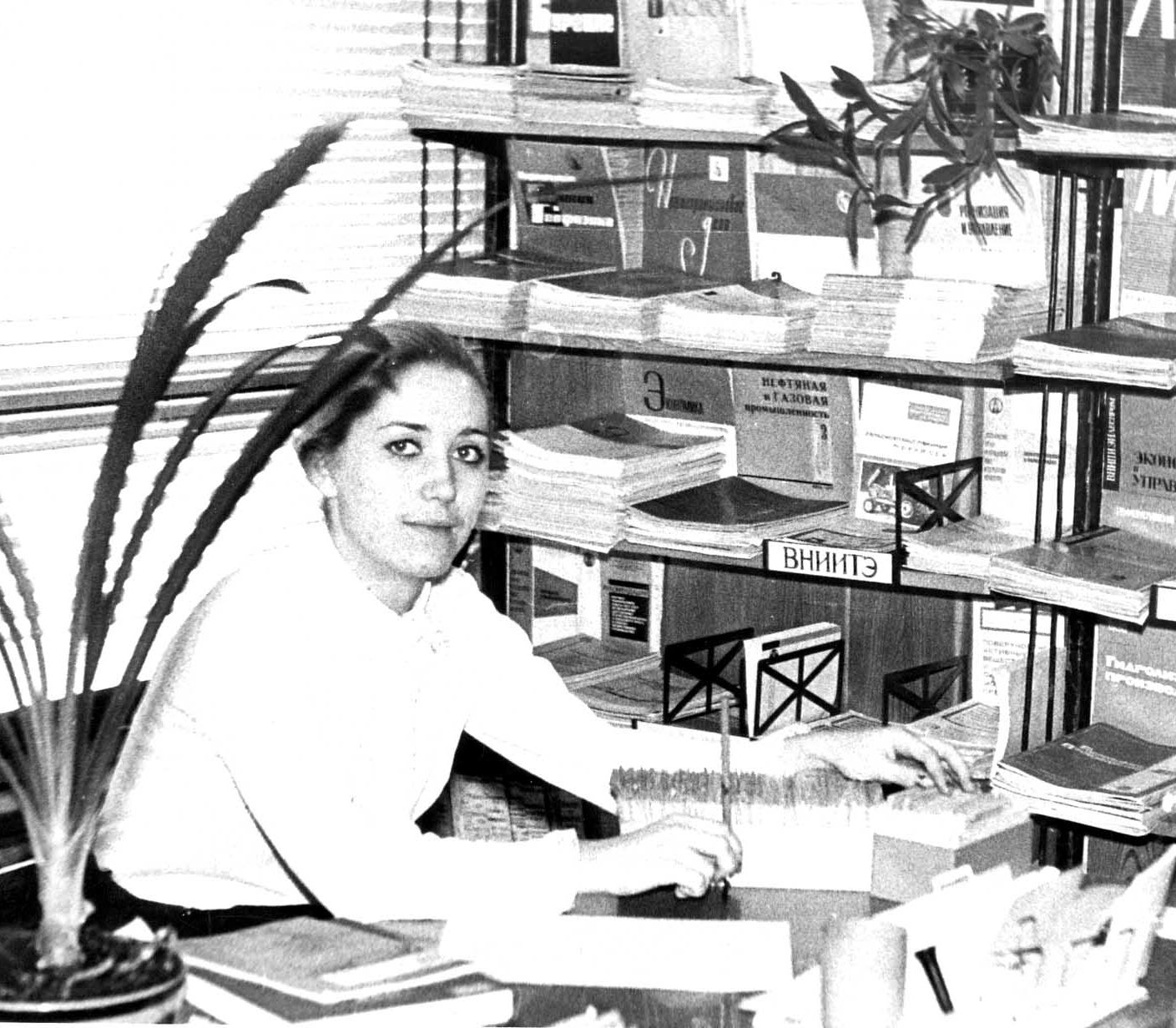
Another bibliographer of the Information and Bibliographic Department.
Photo: from the archive of the SSTL of Ukraine
During the reconstruction of the state, the needs for the activities of the STL grew, and it was impossible to physically serve everyone who wanted to work with the library collections in the small library premises, so users were given literature for individual subscriptions at home, and correspondence readers were sent literature at their place of work.
Interlibrary loan (ILL) services are gaining popularity. Requests from authorized representatives of enterprises, organizations and institutions are carefully considered and, if necessary, referred to other leading libraries of the country. In 1956, the Library began to maintain catalogs of special types of technical literature: “Description of Inventions to the Copyright Certificate”, “Standards”.
The acquisition of the Kyiv branch of the SSL was carried out in accordance with its profile.
The main sources of acquisition were the library collection, departmental institutions, bookstores, and the SSL exchange and reserve fund. In 1957, the library’s documentary collection consisted of 158,504 copies, including 54.7% of domestic books, 0.67% of foreign books, almost 17% of domestic journals, 8.83% of foreign journals, 18.8% of special types of technical literature, and 0.05% of other types, including geographical maps and newspapers.
In 1958, the Kyiv branch of the SSL received legal status and was named the Scientific and Technical Library of Kyiv, which was subordinated to the State Scientific and Technical Committee of the Council of Ministers of the Ukrainian SSR.
At that time, the library was at the forefront of socially important processes, as evidenced by the titles of its exhibitions: “From the Earth to the Moon (Issues of Rocketry Development),” “The Use of Radioactive Isotopes,” “Plastics in Construction,” “Complex Mechanization and Automation of Production,” and others.
In June 1960, the Scientific and Technical Library of Kyiv was reorganized into the State Republican Scientific and Technical Library (SRSTL) according to the Decree of the Council of Ministers of the Ukrainian SSR of June 6, 1960, No. 771-p.
The administrative and managerial staff of the library was increased, and additional funding was allocated for the maintenance of the library in the amount of 266 thousand rubles.
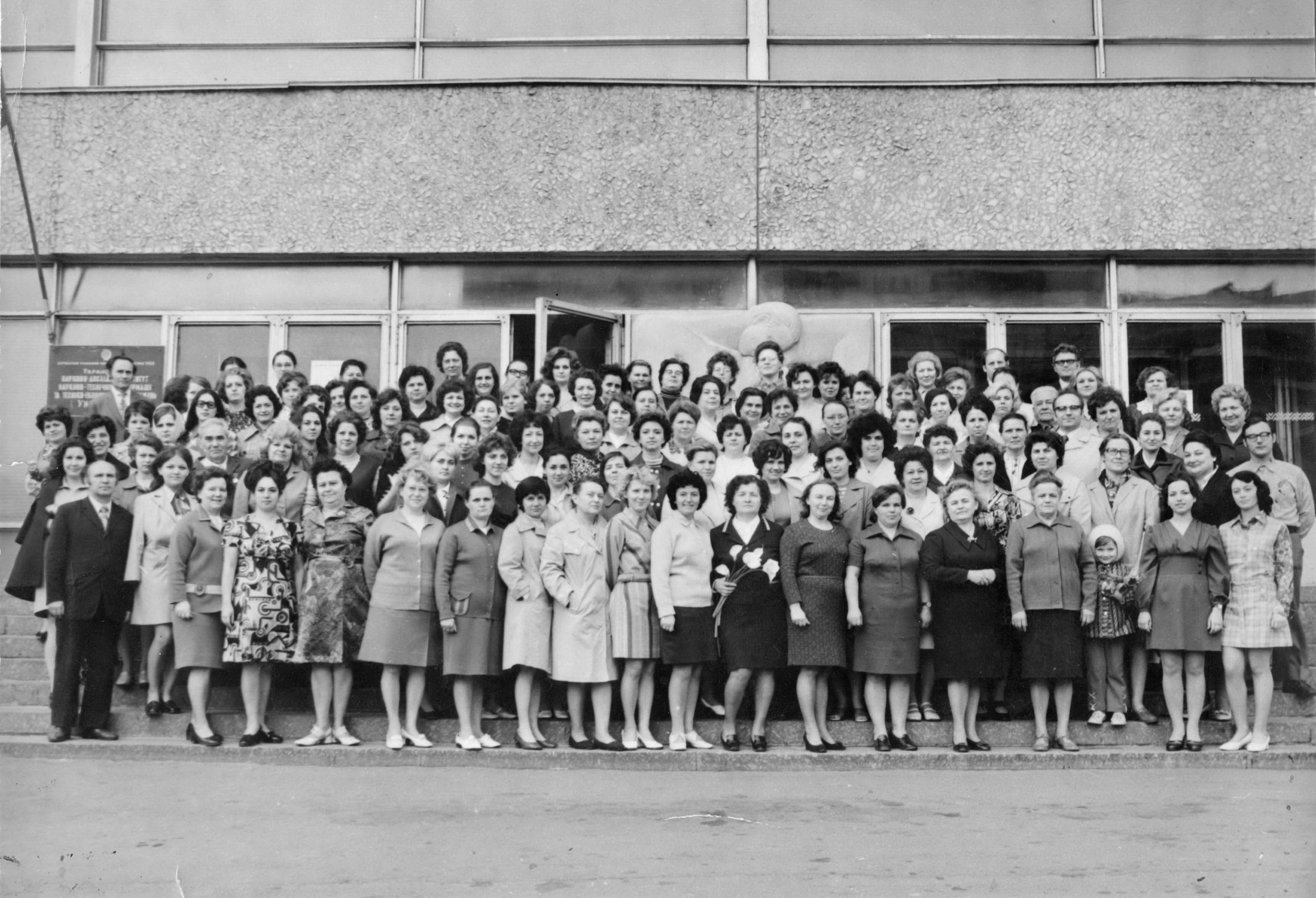
40 years since the foundation of SRSTL
(April 1975)
Photo: from the archive of the SSTL of Ukraine
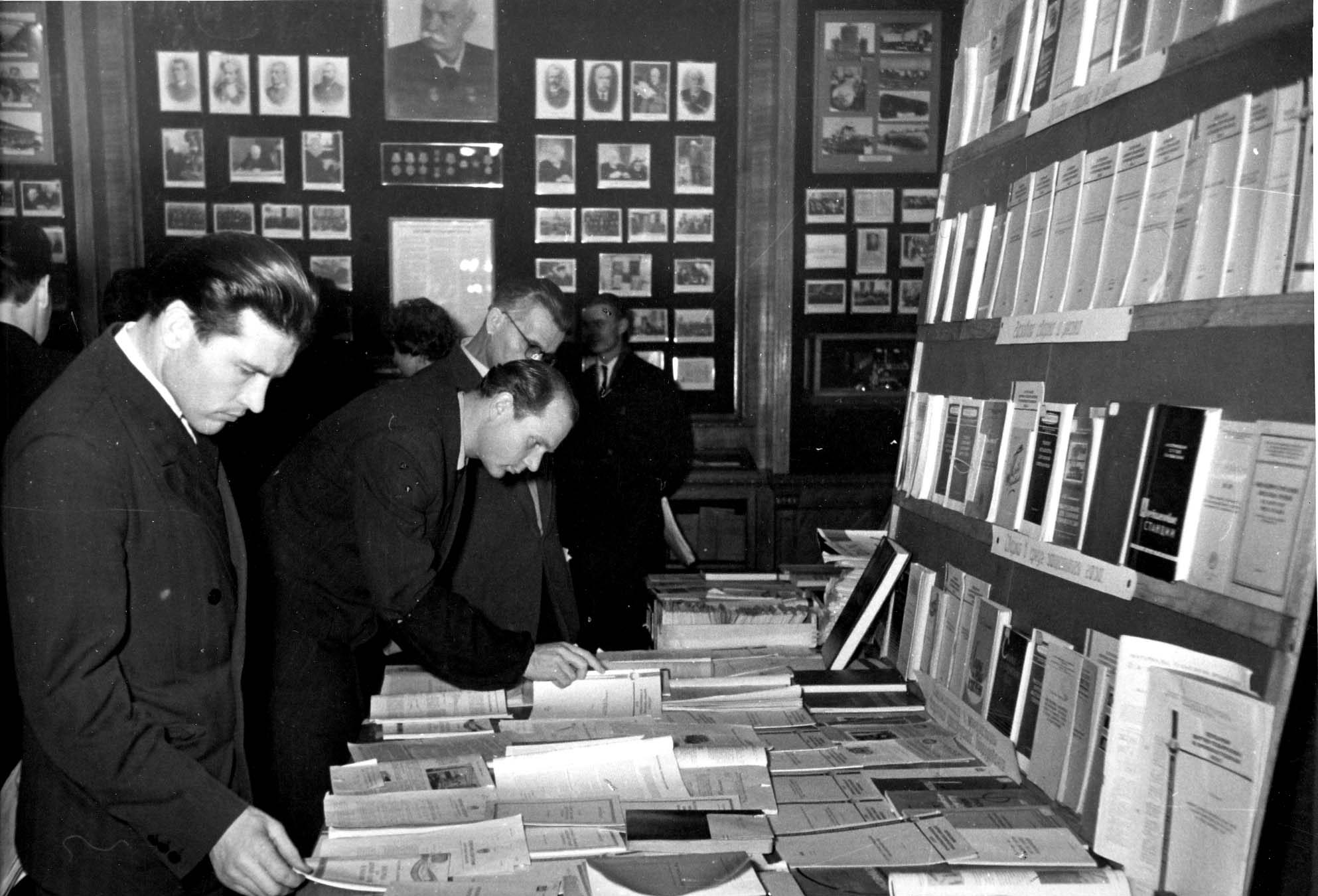
Open literature reviews at the Paton Institute of Electric Welding
Institute of Electric Welding named after Paton
Photo: from the SSTL archive
The new system of management and planning of the national economy in the mid-1960s somewhat restructured the scientific and information activities of the entire state. A number of state and governmental resolutions of various levels strengthened the role of science in the development of the scientific and technical information system. The SRSTL played an important role in this process. In the mid-1970s, the library created the core of a comprehensive multi-sectoral and multi-species reference and information collection (RIC). Since 1972, the library has become a center for depositing scientific works.
In 1971, some of the library’s departments moved to a new high-rise building of the Ukrainian Research Institute of Scientific and Technical Information and Technical and Economic Research of the State Planning Committee of the Ukrainian SSR (UkrRISTI). Together with UkrRISTI, the SRSTL acts as the main library in the State System of Scientific and Technical Information.
In 1975, the documentary collection already numbered 2 million. 200 thousand copies of documents, including 375 thousand scientific and technical reports (17% of the total collection); 230 thousand industrial catalogs for equipment produced by domestic enterprises and foreign companies; 493 thousand information materials on advanced production experience and advanced technologies; the library’s collection includes 54 thousand reports on research and development, etc. Annually, the collection receives over 400 thousand copies of new documents from all sectors of the economy, 2692 titles of scientific and technical journals, including 1000 foreign ones. The nomenclature of documents included in the library’s collection allows to provide comprehensive services to scientific institutions and industrial enterprises with the whole range of domestic and foreign information sources – from idea to final product.
In 1976, an automated search for information on the nomenclature of products was carried out on the basis of a database of new industrial catalogs on punched tape. In 1976, the first stage of the automated management system was introduced in the library.
In the early 1980s, the complex multidisciplinary documentary collection of the SRSTL, characterized by its completeness and relevance, grew significantly. It contains 17.2 million copies of documents. Over 1 million new documents are added to the collection annually. The annual service is provided to 38 thousand users, including 26 thousand readers, 12 thousand enterprises and organizations.
Since the mid-1970s and into the 1980s, SRSTL and UkrRISTI have been a powerful link that provides Ukraine’s governing bodies and management structures with analytical information, as well as provides large-scale information and documentary support to enterprises, organizations, and institutions in all sectors of the economy.

The reading room of the R&D reports collection
(mid-70s).
Photo: from the archive of the SSTL of Ukraine
In the 1990s, Ukraine’s economic potential was in crisis. The young Ukrainian state was searching for a new economic model. The period of state-building is a difficult test for the library as well. The library overcame the crisis and reoriented its work to meet the market conditions. The SSTL of Ukraine’s activities became aimed at helping science, education and business in Ukraine.
Gradually, the SSTL of Ukraine has become a data bank of the world’s scientific and technical potential, which includes almost 20.0 million copies. It is diverse in its typical composition (patent documents; regulations in the field of standardization, metrology and certification; industrial catalogs; deposited scientific papers; R&D reports; dissertations; books; periodicals and periodicals). An important source of replenishment of the documentary collection is the obligatory free copy of Ukrainian publications, which SSTL as a national library has been receiving in accordance with the law since 1999. The library’s premises include book depositories and specialized reading rooms. For the benefit of users, automated reading workstations with Internet access are organized.

The modern look of the library
Photo: Olga Soshenko
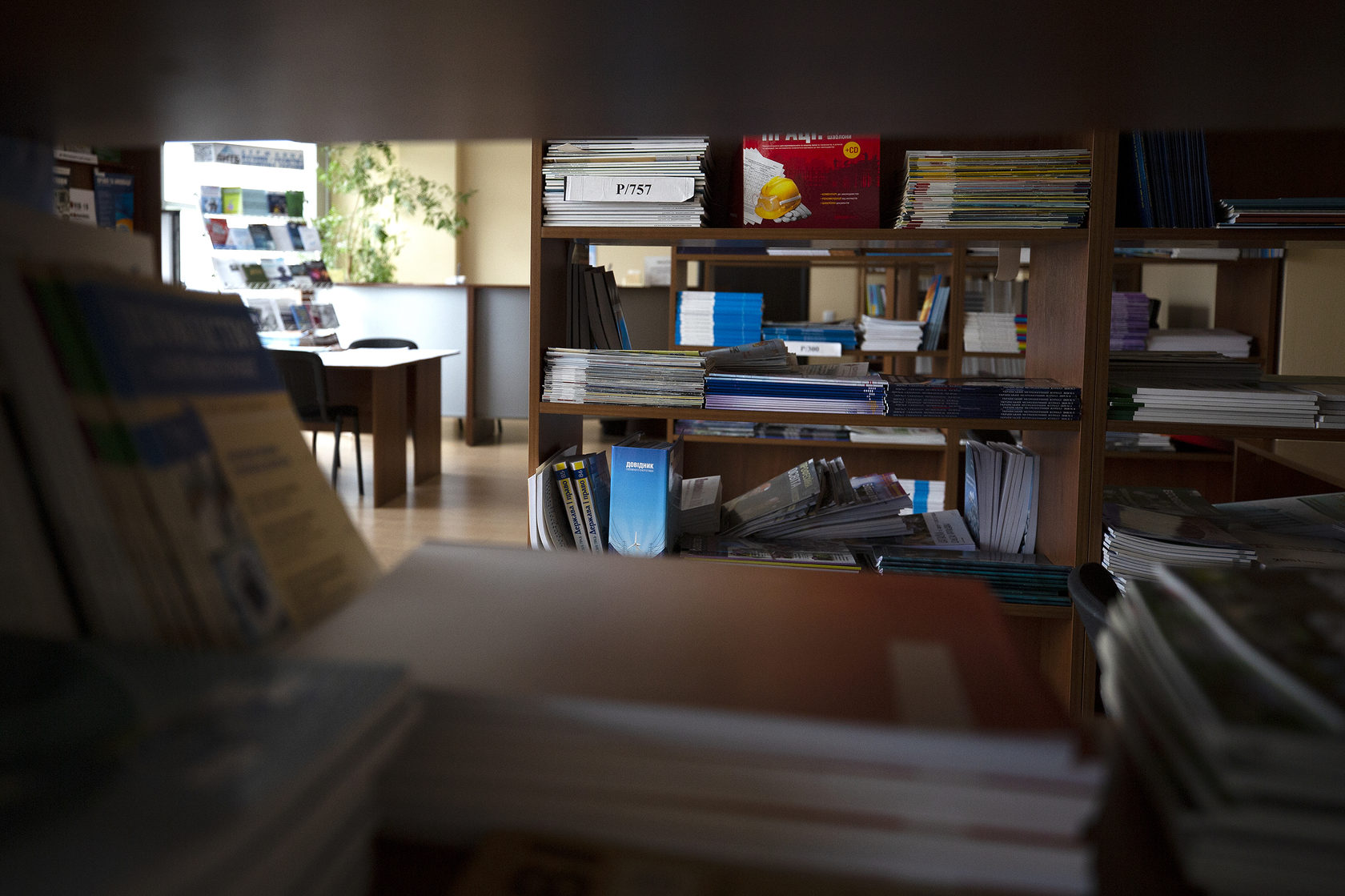
The reading room of the library
Photo: Olha Soshenko
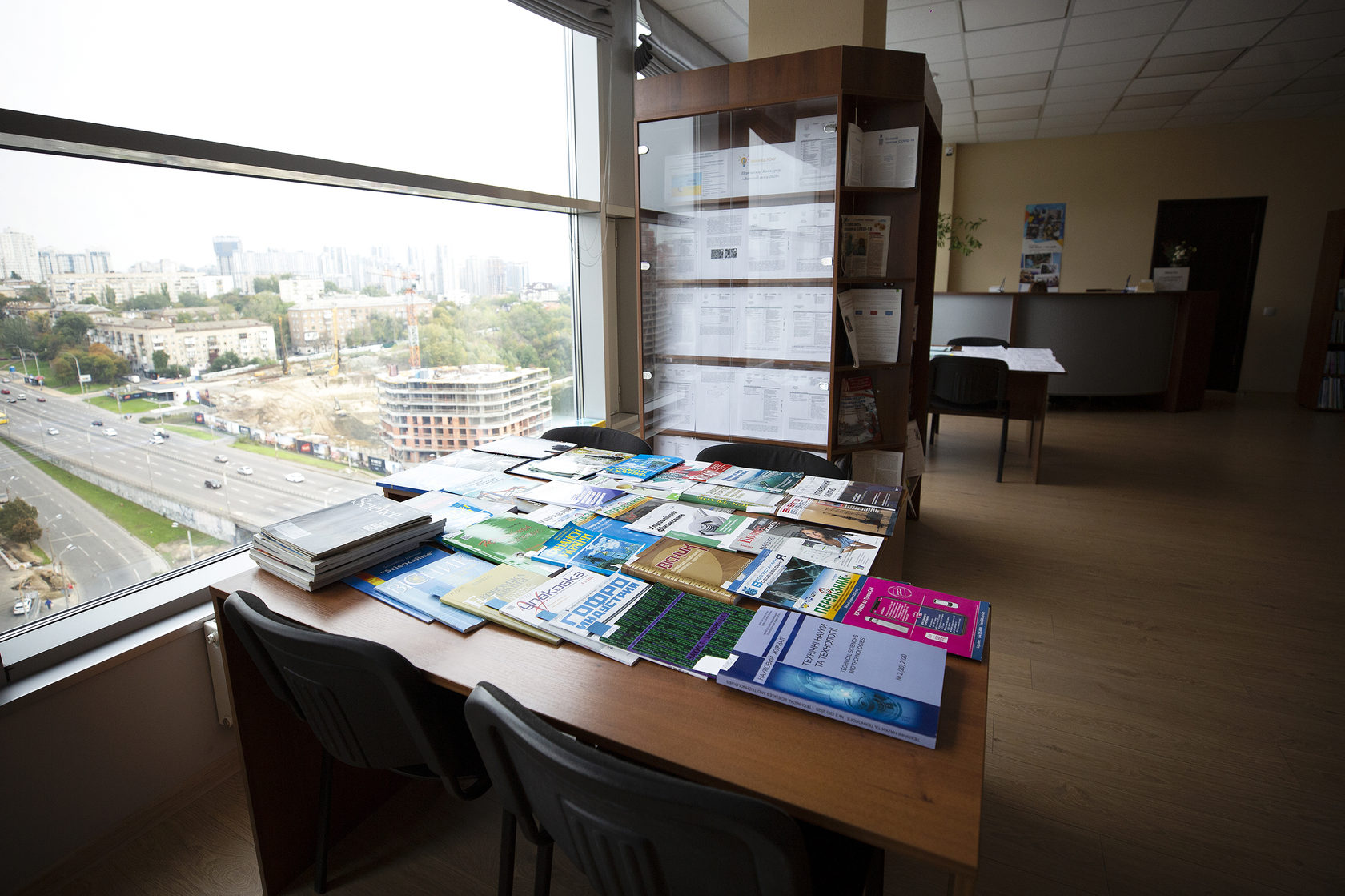
Thematic exhibitions in the library.
Photo: Olga Soshenko
In 2004, the number of users of the SSTL of Ukraine amounted to 72.7 thousand. A new category of users has emerged, who receive the necessary information through the library’s web site. In the early 2000s, the vast majority of the readership was made up of students – future specialists; as a result of the decline in industrial production, the main category of readers – engineering and technical workers – shrank.
The SSTL of Ukraine fruitfully cooperates with national libraries and libraries of the national level, scientific and technical libraries of Ukraine, scientific libraries of higher education institutions, and the NAS of Ukraine. The library solves many important issues with the help of professional associations, government agencies, international public organizations, foreign partners, the U.S. Embassy Information Resource Center, the British Council in Ukraine, and the Technical Information Library (Hannover, Germany). All over the world, due to informatization and the construction of a knowledge society, the mission of libraries is transforming, their functions are changing, and users are becoming more informed and demanding. Today, the SSTL of Ukraine meets the requirements of the times, responds to the needs of society and offers a qualitatively new level of services.
The SSTL of Ukraine is focused on the innovative course of library development, creation of new database collections, conducting research focused on the development of scientific communication infrastructure, open access for scientists, scientometrics, etc. The scientific activities of the library staff enable the library to be at the forefront of library science.
On the way to Europe, the SSTL of Ukraine takes European standards as a model, creates favorable conditions for the functioning of scientific, information and library infrastructure, without which scientific and technological progress of any civilized country is impossible.
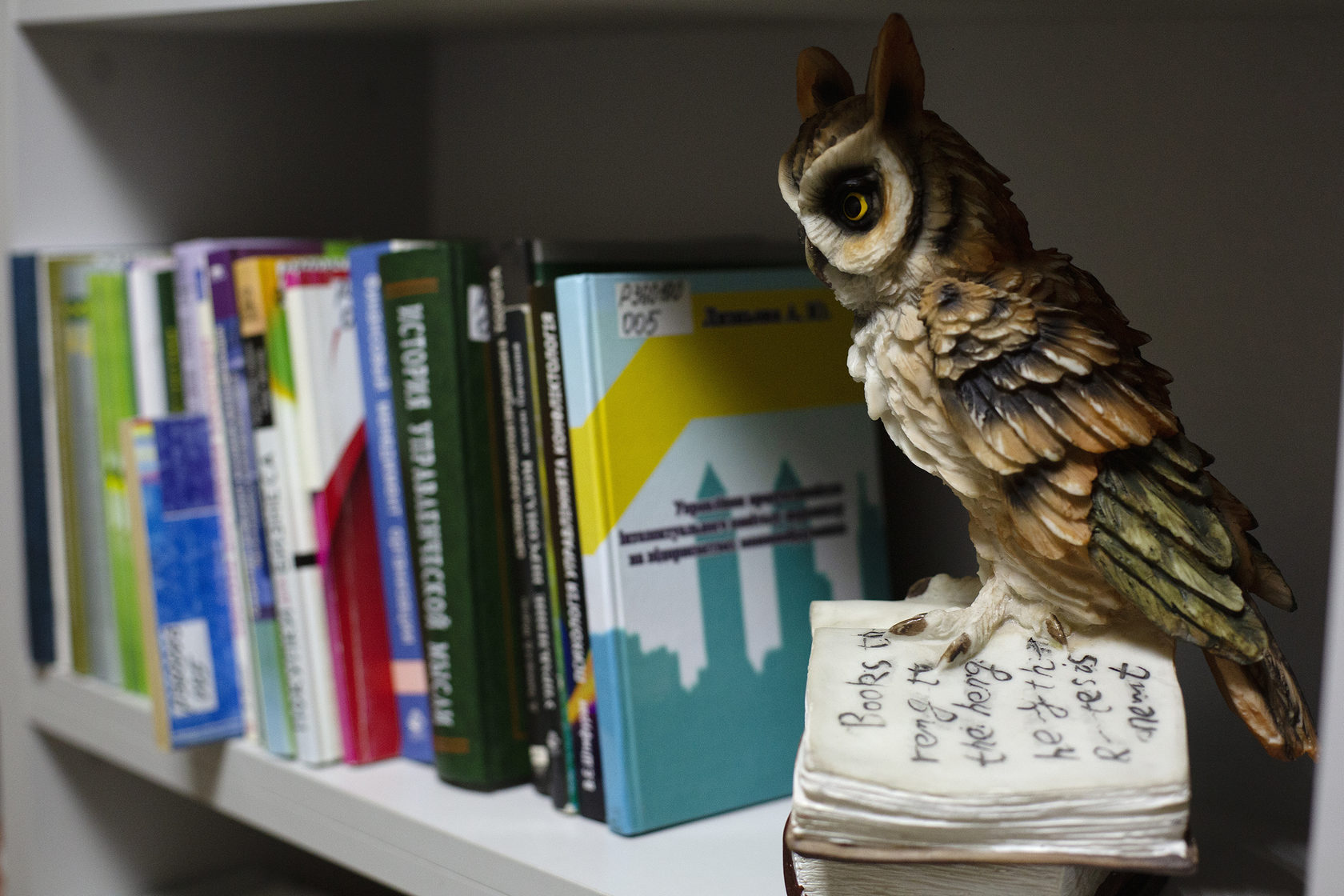
Photo: Olga Soshenko
